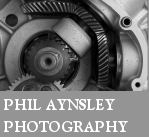


The company produced the Brown motorcycles from 1902 to 1915.
1897 The company was registered on 28 May, to take over the business of the firm of the same name, general hardware, cycle accessories, general warehousemen etc. Brown had premises at 24, 26, 28 & 30 Great Eastern Street. They founded the motor department in 1898 and No. 22 Great Eastern Street was incorporated.
1902 Having been component suppliers to the trade, the brothers produced their first motorcycle. Using typically primitive frames, direct-belt drive and braced forks, they mounted 2hp, 2¾ hp and 3½ hp Minerva engines vertically. Following on from these came a 5hp V-twin.
Report from the 1902 Stanley Show
Brown Bros. show is one bristling with interest for the motor-cyclist. Five Brown motor-bicycles are shown, including the old pattern 1.75 horse-power, and the new vertical motor of 2 horse-power. This has a spray carburetter, and very large tank capacity. Control is effected by two levers only. One machine has the 2 h.p. Minerva engine fitted. Car motors of various powers, and an 8 h.p. Brown car are shown. A motor-tricycle on De Dion lines finds a place, and in addition to these every motor fitting or accessory in practical use is shown, including coils, accumulators, standard parts of motors, lamps, jacks, motor clothing, lubricators, belting, electric wire, frame parts for motor-bicycles, lubricants, pumps, chains, gear wheels, etc.
Motor Cycling, 26th November 1902
1908 There was now an option of a two-speed gearbox and all-chain drive, but the braced forks were still unsprung.
1910 Druid forks were adopted and the range was widened to include a selection of powers, in either single or V-twin, and transmission systems.
1910 Olympia Show Report

3½ h.p. standard pattern Brown, which has been altered in detail only.
Brown Bros., Ltd.
Gt. Eastern Street, London. Stands No. 173-177.
The Brown motor-bicycle for 1911 has an engine of slightly larger bore and stroke than its predecessor of 1910, the dimensions being now 86 mm. by 86 mm., instead of 85 mm. square. A very excellent feature is the provision of adjustments to the valve tappets. The crankshaft rotates in ball bearings. The magneto is located in front of the crankcase, over the exhaust silencer, and the handlebar controlled carburetter is close up to the back of the cylinder. The top tube meets the bottom one at the head, the upper part of the socket being strengthened by a web. This brings the top down to 29ins. from the ground, about as low as it is possible to get it without bends.
The drive includes a rubber belt and variable pulley. The front fork is of the double row
type, and the upper end is linked to the top and bottom of the head, which is suspended by
other links from a collar bearing on a central main spiral spring, and surmounted by a buffer
spring. The lamp bracket is specially strong, and is incorporated with the handlebar lug. The
T.T. Brown is a good deal lighter than the full roadster, and is sent out without pedalling
gear, but either a rigid or a spring fork can be had, to meet the rider's wishes. Messrs.
Brown Bros. are open to appoint agents here they have no representatives and terms will be
supplied on application.
Olympia Show, November 1910
1914 Wholesale Cycle and Motor Material Manufacturers and Merchants. Specialities: motor cycle parts and accessories, cycle fittings and accessories, tools for motors etc. Employees 350.
Note: After World War I, the motorcycles were sold as the Vindec, but there was no association with the Vindec Special (VS) make.
This company was a supplier of parts and fittings and in the early years the Vindec name was not advertised or used very much.
1914 Late in the year the name appeared on a 225cc two-stroke model with
a two-speed gearbox and chain-cum-belt transmission. They also listed a
4hp V-twin, with an overhead inlet valve, Bosch
magneto, and various transmission options.
Brown 1914 Models
1915 They were now using either their own or Precision engines only. Production of Brown motorcycles ceased.
1916 The two-stroke was still listed and the twin had a 6hp JAP engine driving a three-speed Sturmey-Archer gearbox.
Post-war. A 225cc two-stroke single was listed.
1919 March. Adverts for Electric self-starters and Berdea carburettors. Issued catalogue on motorcycle accessories.
1920 A 976cc sv JAP V-twin was added.
1922 Those models carried on into that year.
1923 The two-stroke was replaced by a 292cc sv JAP model finished in art grey.
It is probable that most Vindec machines were bought-in designs from established manufacturers, finished and badged under the Vindec name. Some models of that period strongly resembled Rex-Acme machines.
1924 The big twin went and a 170cc two-stroke joined the JAP single for one season.
1925 The twin returned for that year only, along with the 292cc sv model.
1926 The 292cc sv model was enlarged to 300cc, and another lightweight two-stroke of 147cc was added for one season.
1927-1929 It was the 300cc sv JAP machine that carried them through to their final year of 1929.
1937 Aircraft fittings.
1939 Aircraft Industry Suppliers
1963 Motor Show exhibitor. Accessories and components; Garage equipment. Of Eastern Street, London.
Sources: Graces Guide, The Motor Cycle